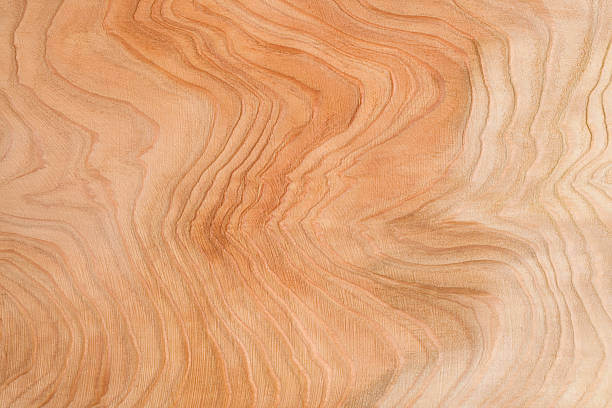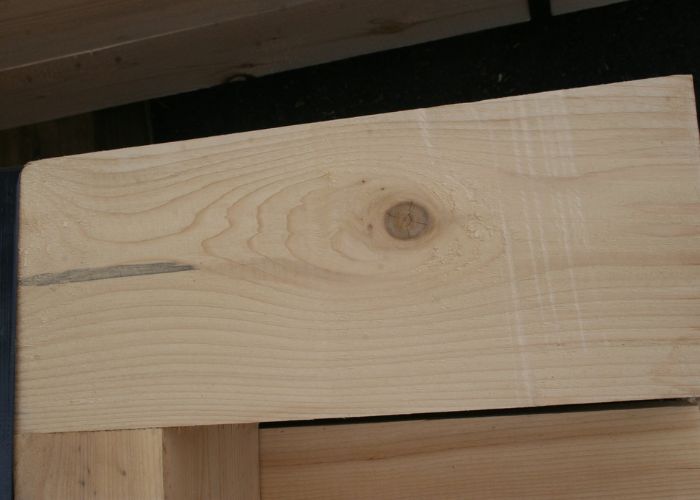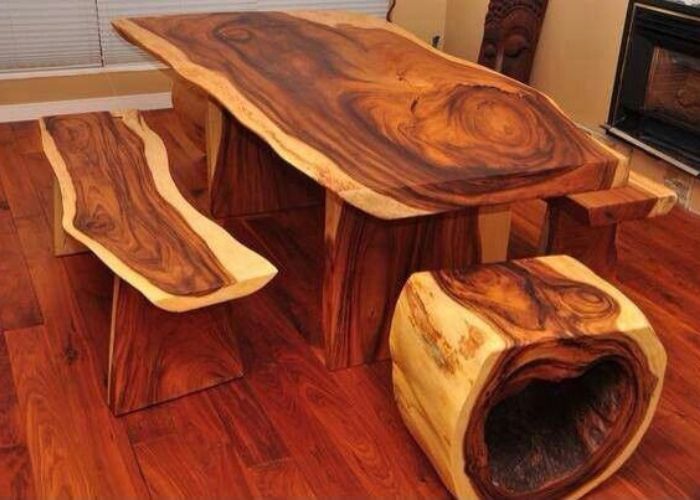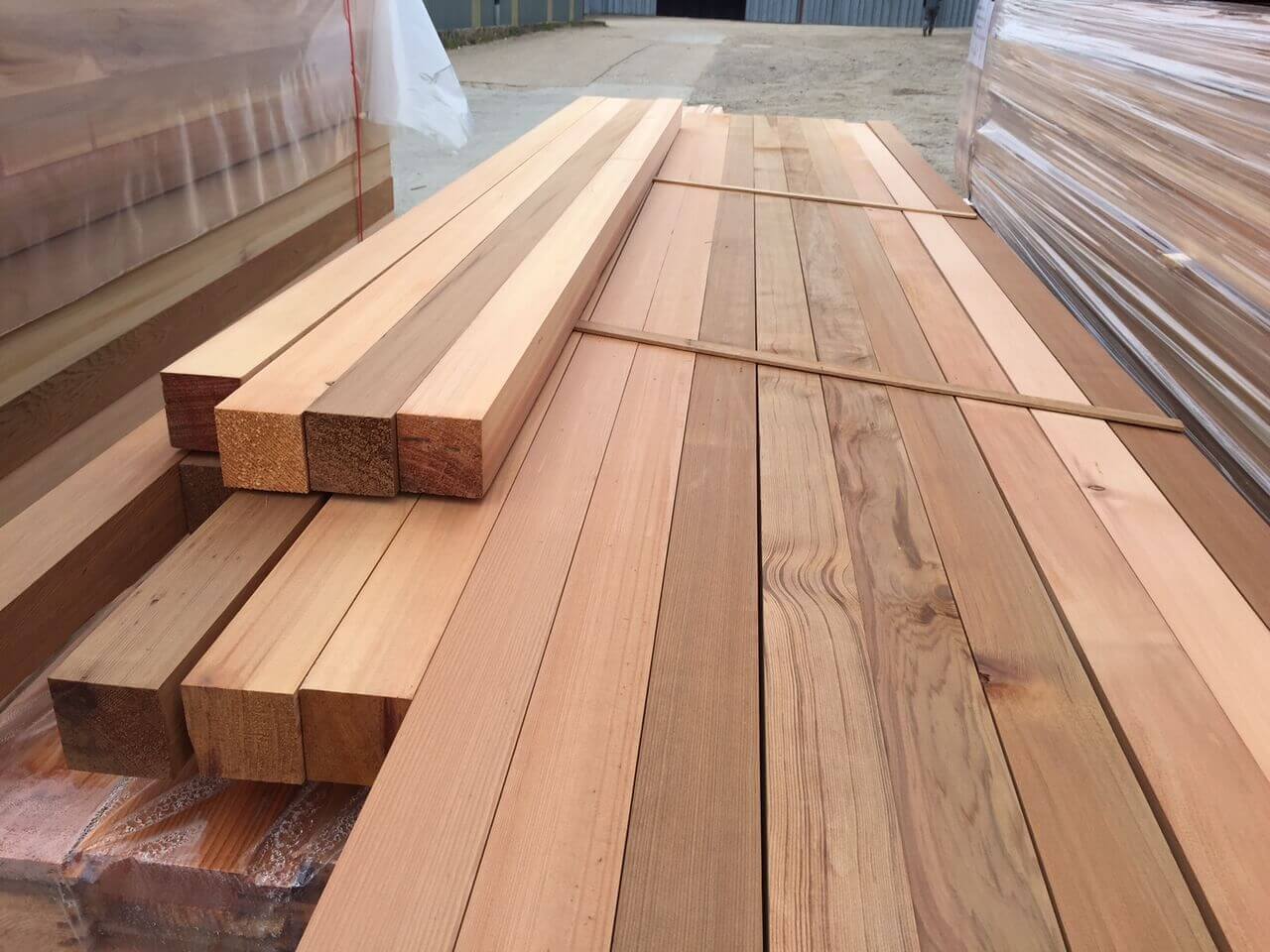Is cedar wood expensive? Some woods are considered more pricey than others, and cedar is one of those woods. But why is it so expensive? Is it worth the money?
This post will look at cedarwood and what makes it so special. We’ll also explore whether or not cedar is worth the expense. So if you’re curious about cedarwood, keep reading!
Is Cedar Wood Expensive?
Yes. Cedar is more expensive than comparable woods. For instance, cedar decking boards range from $4 to $9 per linear foot. By comparison, the Australian cypress, a softwood harder than cedar, costs from $2 per board foot.
Cedar is a popular wood for many reasons, one of which is its beauty and durability. It’s also resistant to rot and insects, easy to work with, and takes stain and paint well. Here’s more on staining cedar wood.
What is Cedar Wood?

Cedar is a type of softwood that comes from evergreen trees in the Pinaceae family. The most common cedars are the eastern red cedar (Juniperus virginiana) and the western red cedar (Thuja plicata).
Cedarwood is prized for its beauty, durability, and aromatic scent. It’s often used in furniture, chests, closets, and cedar sheds. Cedar is also popular for fence posts, shingles, and sustained cedar siding.
You might also want to know the best screws for cedar fences. Read here.
Types of Cedar
Some of the most popular types of cedar include:
Western red cedar
Western red cedar, also known as Thuja plicata, comes in a yellowish, pinkish hue. The wood is lightweight yet strong and has a straight grain.
It’s naturally resistant to rot and easy to work with, making it a popular choice for woodworking projects. Western red cedar is also commonly used in making musical instruments, boats, cedar shingles, crates, and boxes.
Eastern Red Cedar
Another name for Eastern Red Cedar is “Aromatic Cedar.” This type of cedar is native to the eastern United States and Canada. Eastern red cedar has a stronger scent than western red cedar.
It has a straight grain with a fine, even texture. However, the grain is sometimes wavy or interlocked, making it hard to be used in machines. Instead, it’s used to make pencils, bows, and other outdoor furniture.
Northern White Cedar

Its scientific name is Thuja occidentalis, and it’s a cousin of western red cedar. It’s native to the northeastern part of North America and is often used for building boats, cabinetry, lumber, and shingles.
It’s brownish-yellow in color and turns a dark brown or grayish-black as it ages. It’s also durable, not easily rotting or decaying even when exposed to moisture.
Lebanon Cedar
Lebanon cedar is also known as Cedrus libani. It’s a close relative to the Atlas cedar and can only be found in the mountains of Lebanon. It’s commonly used for building ships, coffins, and ornamental objects like staves, pillars, and doors.
Spanish Cedar
This type of cedar is prized for its warmth and beautiful appearance. However, it has a straight grain with a wavy or interlocked pattern. This makes it difficult to be used in machines.
Spanish cedar is often used to make musical instruments, interior trim work, cabinets, and furniture.
Incense Cedar
Incense-cedar is also known as California incense cedar. It’s grown in the southwestern part of North America, commonly found in California and Oregon.
It’s harder than other types of cedar and has a light brown color with a reddish tint. The grain tends to be straight but not consistent. It’s often used in making pencils, cedar fence posts, and shingles.
See: How long does a cedar fence last?
Why is Cedar so Expensive?
Cedar is a popular choice for woodworking projects due to its durability, aesthetic appeal, and pleasant scent. However, both cedar for cutting boards and decking boards can be quite expensive because of their many desirable qualities.
Some of the factors contributing to this include the scarcity and high demand for certain types of cedar and the extensive labor required to harvest, process, and prepare the wood for use.
However, despite its high cost, cedar remains a popular choice among woodworkers and home decorators alike due to its versatility and unique properties.
So if you’re looking for a plank of beautiful and durable wood for your next project, cedar might be the perfect option!
Read also: Optimal sealer for cedar wood.
Benefits of Cedarwood

Here are some of the reasons why you should consider using cedar in your next woodworking project:
Cedar is beautiful
The arrangement of grains of cedarwood gives it a stunning finish that is sure to draw attention. This makes it a great choice for furniture, cabinets, flooring, and other home décor items.
Cedar is sound resistant
Cedar can absorb sound. This makes it ideal for use in areas with a lot of noise, such as offices, schools, and hospitals. It can also make soundproofing panels for use in recording studios.
Cedar is durable
The cedar is a hardy wood that thrives in damp environments. Cedar does not swell, shrink, decay, or warp even during extreme weather changes because this property can be used in making outdoor furniture and decks.
To maintain its natural beauty while enhancing durability, you can use the best clear cedar finish for outdoors.
Cedar is a natural insect repellent
Cedar contains natural oils that make it resistant to insects. This makes it ideal for use in areas with a risk of infestation, such as food storage areas, closets, and drawers.
Cedar Wood Uses
There’re many different uses for cedarwood, from home décor to construction and beyond. Some examples include:
Cloth storage chests
Because of its aroma, cedar lumber is commonly used in making trunks, wardrobes, and chests for storing clothes.
It also has a natural antifungal and antibacterial effect that helps in eliminating the fungi and bacteria in the stored clothes. This also means either parasite will not infest your clothes.
Cladding
Cedar wood exterior cladding involves adorning a building’s outer walls with alternate materials. Cedar’s consistent texture, elegance, resilience, and noise reduction qualities make it a favored choice.
Ceiling beams
Cedar beams are commonly used in construction, especially for ceilings and roofs. Cedar has a high resistance to shrinking, warping, and insect damage. This makes it ideal for use in areas with a risk of infestation or decay.
Shingles
I would recommend either eastern or western red cedar for shingles because it’ll be exposed to rain, wind, and other harsh weather conditions.
Cedar, therefore, is the best candidate for shingles because it’s a good insulator. Cedar’s heartwood also has good resistance to decay.
Musical instruments
Cedar is also commonly used in the construction of musical instruments because its acoustic properties make it an ideal material for sound boxes, guitar necks, and piano bridges.
Cedar wood oil
Cedar wood is also commonly distilled to produce cedarwood essential oil and cedrol, both of which have various benefits for skin and hair health. The oil comes from the roots and bark of the cedar.
Read also: Is walnut wood costly?
Advantages of Cedar Wood
- Lightweight- Cedar is a relatively lightweight wood, making it easy to work with and transport.
- Easy to clean- Cedar is also easy to clean and does not require special cleaners or chemicals. All you need is a mild soap and water solution.
- Safe for humans and pets- Cedar is also safe for humans and pets and will not cause any adverse effects when used in furniture or other home décors.
- Durable- Cedar is durable and can last for many years with proper care and maintenance.
- Available in many different forms- Cedar wood is available in various forms, including lumber and shingles. This gives you the flexibility to choose the form that best meets your needs for your next woodworking project.
- Temperature resistant- Cedar wood is also temperature resistant and can withstand extreme hot and cold temperatures without damage.
See also: Best pet safe stain.
Disadvantages of Cedar Wood
- Is cedar a hardwood or softwood? Well, cedar is a softwood– While cedar is a durable wood, it’s still classified as softwood. This means that it’s not as strong as some of the other options on the market.
- Cedar can be difficult to find- Cedar is not as widely available as some of the other options, making it difficult to find for some people.
FAQs
What’s the price of red cedar wood?
When it comes to the price of red cedar wood, it depends on several factors. The type of tree the wood is sourced from, the length and width of the cedar boards, and the overall quality of the lumber will all play a role in determining the price. However, you can expect to pay anywhere from $2 to $6 per board foot for red cedar lumber.
How expensive is cedar wood?
Western red cedar (Thuja plicata) is one of the most popular types of cedar for construction and casualty, and it can cost anywhere from $5 to $20 per board foot. Meanwhile, yellow Cedar (Chamaecyparis nootkatensis) is another popular type of cedar often used in cabinetmaking or Joinery, and it can cost up to $35 per board foot.
How much does cedar decking cost?
Cedar decking costs anywhere from $4 to $8 per linear foot, depending on the quality of the lumber. Cheaper grades of cedar wood decking can cost as little as $3 per linear foot, while higher-quality boards can cost up to $10 per linear foot.
Is cedar good for decks?
Yes, cedar is a good choice for decks. It’s durable and naturally weather-resistant. It’s also naturally resistant to pests and decay. Cedar also has a pleasant scent that many people find appealing.
Is pressure-treated wood cheaper than Cedar?
Yes, treated lumber generally costs less than Cedar and can last a similar period if maintained properly. Overall, Cedar will cost more money upfront but will require less maintenance than pressure-treated wood over its lifetime.
Read the battle of Cedar vs treated lumber to learn more.
Conclusion
So, Is cedar wood expensive? Unfortunately, we may not have a definite answer because the cost of cedar varies depending on the type of cedar, grade, and the region where it has been harvested.
Western red cedar is one of the most expensive types, while Eastern red cedar is one of the least expensive types.
We hope this article has helped you make an informed decision about which wood best suits your needs. Now, delve into our comprehensive article titled “Do cedar surfaces require sealing” to gain further insights and guidance on the topic.


Very definitive explanations. Thank you for the education. Any knowledge on coconut timber please.
We’re working on that article as well. It’ll be ready soon